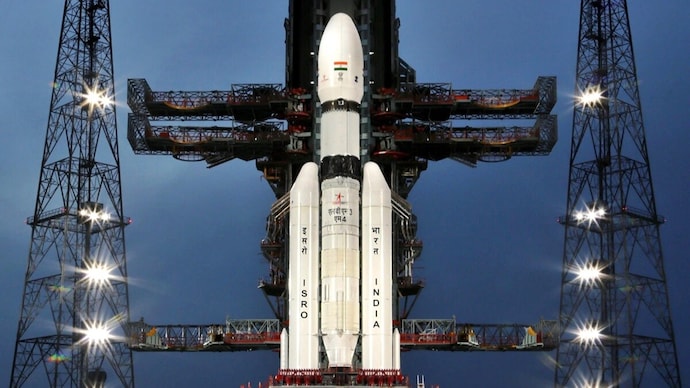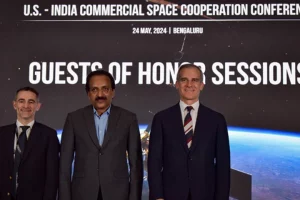The Chandrayaan-3 mission aims to demonstrate India’s capability to safely land and explore the lunar surface which will make India only the fourth country after the USA, Russia and more recently China to achieve this feat.
Timelines
Indian Space Research Organisation (ISRO) is all set to launch the Chandrayaan-3 mission to explore the Moon on July 14 at 2:35 pm from the Satish Dhawan Space Centre in Sriharikota.
The journey from Earth to the moon is estimated to take around a month. The landing is currently scheduled for August 23-24, with potential adjustments depending on the sunrise over the moon. If necessary, ISRO will reschedule the landing for September.
What happens after landing
Upon landing, the lander named ‘Vikram’ will deploy its four scientific payloads to study the moon’s surface temperature and subterranean characteristics. Additionally, the lander carries an instrument called ‘Spectro-polarimetry of HAbitable Planet Earth’ (SHAPE), designed to collect data on light emission and reflection from Earth.
The 6-wheeled Rover ‘Pragyan’ will come out to explore the moon, using chemical tests, for 14 days. The Rover is equipped with multiple cameras that will send back images to earth. It is backed by a solar panel to charge its battery.
Exploring the Moon provides scientists with invaluable insights into Earth’s origins, the formation and evolution of the Earth-Moon system, and the influence of asteroid impacts on Earth’s past and potentially its future.
India’s earlier lunar missions
India’s previous lunar missions, Chandrayaan-1 and Chandrayaan-2, have contributed significantly to our understanding of the moon. Chandrayaan-1 discovered water molecules on the moon, altering our knowledge of its geological history. The findings prompted NASA’s ambitious Artemis Program in 2018.
Chandrayaan-3 is a follow-up to the Chandrayaan-2 mission that faced challenges during its soft landing attempt in 2019. Chandrayaan-3’s development phase commenced in January 2020. Learning from the previous mission’s setbacks, ISRO has made enhancements, including stronger impact legs for the lander.




















